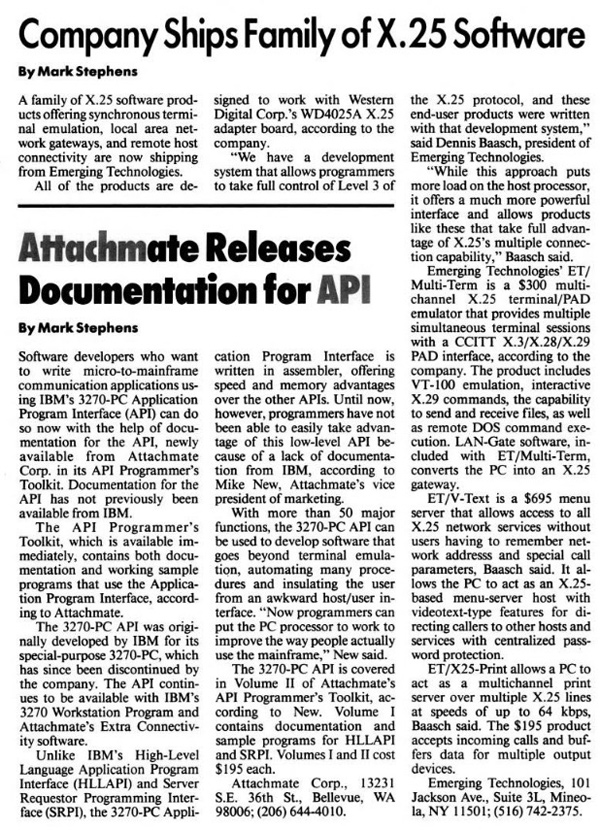Status
Privately Held
Background
Established in 1988 by its founder, Dennis E. Baasch, incorporated in the state of NY in 1989, Emerging Techologies (ET) was one of the first companies to successfully establish X.25 protocol software for the Personal Computer. Profitable since 1991, ET initially utilized hardware produced by Western Digital Corp, WD soon discovered ET's software offering was superior to their own and began recommending the software to its customers. When WD discontinued their hardware product, ET began manufacturing its own hardware and WD continued to send leads their way. In 1991, ET was granted a large contract from GTE to use their communications boards in telephone switch accounting systems, providing many years of financial success.
With the massive expansion of the Internet in the mid-90s, ET established itself as a pioneer in HDLC / WAN communication in the burgeoning PC-based router market. Specializing in UNIX-like operating systems, ET's products became the de-facto standard for frame relay in PC-based routers.
In response to increasing competition and shrinking margins, ET developed a bandwidth management subsystem for their plug-in card in an effort to maintain margins and software superiority. In 1996, ET separated its software from the HDLC boards and introduced a stand-alone software product, the ET/BWMGR, at a time when no other such product existed.
Emerging Technolgies Today
ET has discontinued its HDLC plug-in board business in favor of the more expansive and lucrative bandwidth management business. With the introduction of its bandwidth management appliance in early 2000, the product has enjoyed increasing popularity with small to medium Internet Service Providers due to its low price and powerful features. The most recent versions of the ET/BWMGR product compare favorably with the highest end products on the market, installed in 1000s of ISPs, Universities and large corporate networks worldwide. ET continues to take advantage of their low-cost, low-investment position while benefiting from the economies of scale of using off-the-shelf hardware and their superior, software technology.
In 2006, ET abandoned its brick and mortar business model in New York and re-organized to a distributed, virtual model based in Florida. With over 2300 customers in 115 countries, ET's efficient, streamlined business model saves its customers millions of dollars by providing high end products at affordable prices.
Key Personnel
President, CEO, Primary Software Architect - Dennis E. Baasch
Vice President, Technical Guru - Robert Schmitt

